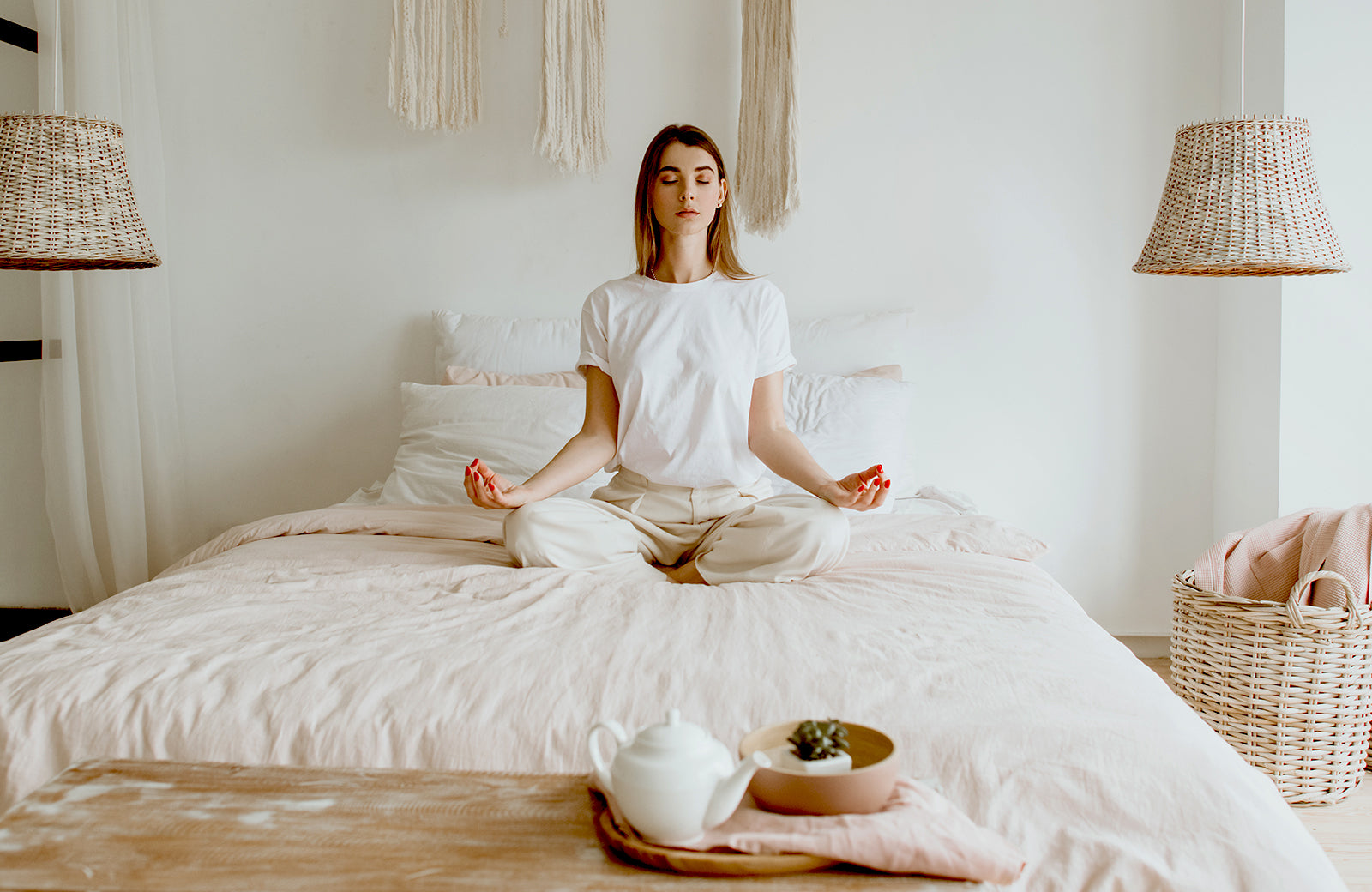
Fall asleep relaxed – tips for relaxing before sleep
If it is difficult to fall asleep and we cannot relax in the evening, there is usually a lack of proper relaxation. Find out now how you can reduce your stress level using simple methods, help you fall asleep and support peaceful sleep.
Table of contents- Relaxing before sleep
- 4 tips for relaxing before sleep
- Conclusion
1. Relaxing before sleep
We've all probably been in this situation before: you're lying in bed and you just can't fall asleep. Studies show that stress and psychological stress are among the most common causes of problems falling asleep. Relaxation in the evening and before going to bed is therefore important for healthy and peaceful sleep. We'll show you 4 methods to calm down more quickly and fall asleep more relaxed.
2. 4 tips for relaxation before sleep
#1 Downshift and Reflect
First switch off! During the day we receive a lot of information and impressions and have to take on many important tasks - that's quite tiring. The memory then becomes active, especially during deep sleep, and processes the new memories. It can therefore be helpful in the evening to review the past day and sort out tasks for the next morning. Try to organize and structure your thoughts so that you can avert possible stress factors and clear your head. Then nothing stands in the way of you falling asleep relaxed. By the way: You can find out more about memory and sleep here.

#2 Evening routines and fixed rituals
A regular evening routine can help against problems falling asleep.Individual rituals can contribute to your relaxation by ensuring that you can calm down mentally and physically and get used to fixed structures. In combination with other sleep tips, such as maintaining regular bedtimes, they have a positive effect on falling asleep and improving sleep. Warming herbal tea or hot milk with honey, an evening walk at the same time or the tried and tested nighttime reading are ideal for promoting sleepiness and relaxation before falling asleep.
#3 Relaxation techniques
We will introduce you to two well-known techniques that can bring the body into a state of relaxation and prepare it for a peaceful sleep.
Autogenic training
Autogenic training is intended to use a type of self-hypnosis to lead to physical and mental relaxation and to prepare for sleep.
Here's how to do it: Lie or sit down comfortably and formulate short calming thoughts inside yourself, such as “I'm tired and I'm relaxing” or “My arms are getting heavy”. Repeat these short sentences over and over again in your mind and feel whether your body reacts and you relax.Progressive muscle relaxation
Progressive muscle relaxation aims to relieve your body of stress-related tension bit by bit and thus optimally prepare it for a peaceful sleep by specifically tensing and relaxing muscle groups.
Here's how to do it: Lie or sit down comfortably and try to concentrate on individual muscles and body parts in a specific order. For example, start with your right hand. Tense the muscles there and release the tension completely after holding them for a moment. This continues over the arms, legs, shoulders and other areas until the body is completely relaxed.Here you can find more information and great instructions for progressive muscle relaxation.
#4 breathing exercises
Breathe in, breathe out – fall asleep! Breathing techniques help you relax before sleep and have proven to be a simple aid to falling asleep. Everyone has to try out for themselves which method ultimately leads to fatigue. While some breathing, counting and breath-holding techniques work smoothly for some, they lead to stress for others and thus prevent them from falling asleep. That's why we'll show you two different methods.
The 4-7-8 method
The 4-7-8 technique is a well-known breathing technique for falling asleep. She promises to fall asleep within 60 seconds.
Here's how it works: Breathe in for four seconds, hold your breath relaxed for seven seconds and then breathe out as evenly as possible for eight seconds. These steps are then repeated until you fall asleep.Deep breathing
If you tend to sweat while breathing and counting at the same time, deep breathing may be more suitable for you.
Here's how it works: Breathe in and out deeply, as evenly as possible. In this way you simulate calm sleep breathing and can relax your body and bring it to sleep.

3. Conclusion
-
Relaxation is an important prerequisite for a peaceful sleep and promotes falling asleep.
-
The mental reflection and structuring of information, impressions and tasks creates clarity and supports mental relaxation.
-
Relaxation techniques such as autogenic training or progressive muscle relaxation can prepare you for sleep and improve the ability to fall asleep.
-
The 4-7-8 method or deep breathing calms the body and mind and gently supports you in falling asleep.
Greetings and see you soon!




Leave a comment
This site is protected by hCaptcha and the hCaptcha Privacy Policy and Terms of Service apply.